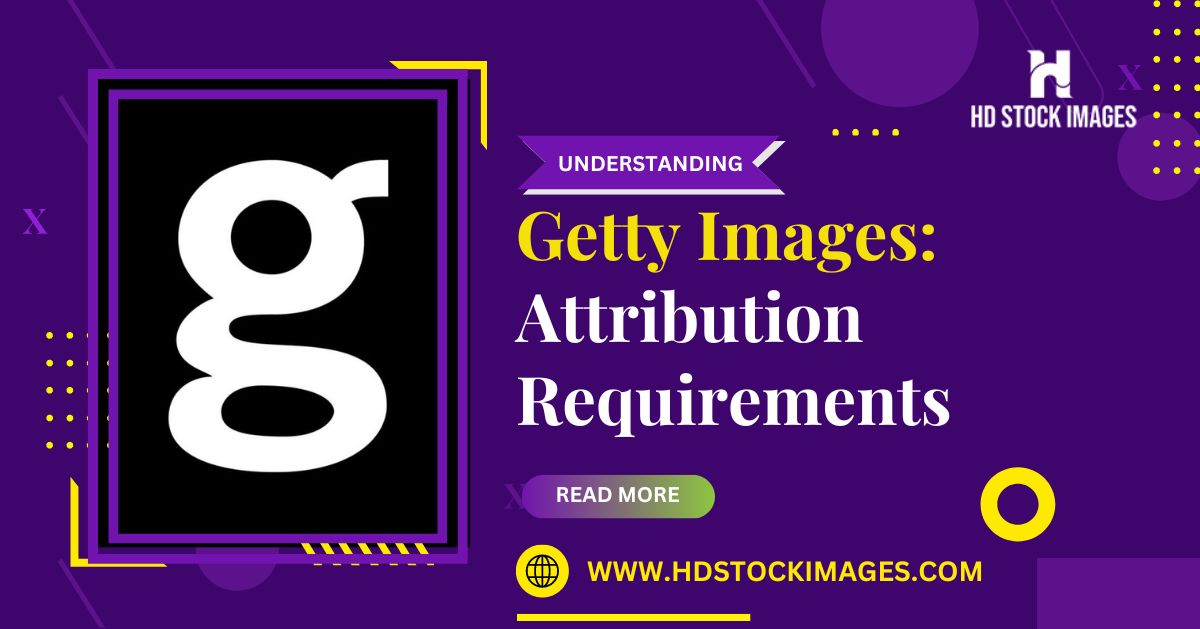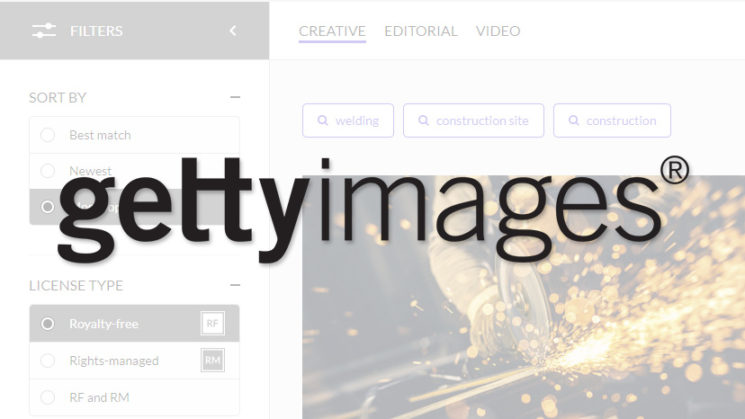If you're a photographer or a creative looking to earn some income through stock imagery, you may have come across Getty Images. But how does the royalty payment system work for contributors? Understanding these payments can feel like a puzzle, but don't worry! In this post, we'll break down what you need to know about Getty Images royalty payments, so you can focus on creating great content while making money from your art.
Overview of Getty Images

Now, let’s dive into what Getty Images actually is. Founded in 1995, Getty Images has become one of the largest and most well-known stock photo agencies in the world. It serves clients ranging from big corporations to individual bloggers, providing a vast repository of high-quality images, videos, and music. Here’s a quick overview of what makes
- Diverse Content: Getty offers everything from editorial images covering major news events to artistic visuals for advertising. This diversity attracts a range of buyers.
- Quality Control: They maintain a strict quality control policy, ensuring that only the best images are available for licensing.
- Global Reach: With clients in different industries around the globe, Getty has a solid foothold in the stock image market.
- User-Friendly Platform: Their website is easy to navigate, making it simple for clients to find what they need.
Overall, Getty Images operates on a model where contributors upload their work, and in turn, they earn earnings based on the usage and licensing of their images. They provide various royalty structures, allowing for flexibility and potential for income. So, whether you're an established photographer looking for new revenue streams or just starting out, understanding Getty’s ecosystem can be your first step toward leveraging their platform effectively.
Also Read This: Does Getty Images Have a Free Trial? Exploring Options for Exploring the Platform
Royalty Structure Explained

When it comes to understanding how royalty payments work at Getty Images, it’s important to dive into the royalty structure itself. Essentially, Getty Images operates on a percentage-based model, where contributors earn a percentage of the revenue generated from their images and videos. Simple, right? But let’s break it down further!
Here’s a quick overview of how it generally works:
- Standard and Exclusive Contributors: Contributors can choose to be either standard or exclusive. Exclusive contributors often earn higher percentages because they provide content solely to Getty Images.
- Royalties by License Type: Getty Images licenses content in various ways—like royalty-free (RF) or rights-managed (RM). The structure of royalties depends on the type of license sold.
- Image Resolution: The resolution of the image also influences payouts. Higher-resolution images typically command a higher price point, thus resulting in larger payments.
Here's a brief table explaining the possible royalty ranges:
| License Type | Royalty Range |
|---|---|
| Royalty-Free | 20% - 45% |
| Rights-Managed | 30% - 50% |
Now, keep in mind that these percentages can vary based on several factors, which leads us right into our next topic!
Also Read This: How to Download YouTube Videos with VLC Media Player
Factors Influencing Royalty Payments

While the royalty structure lays the groundwork for how much a contributor can earn, several factors can influence these payments. Understanding these elements can significantly help you strategize and maximize your earnings!
Here’s a list of factors that play a crucial role in shaping your royalty payments:
- Quality of Content: High-quality images and videos are more likely to attract buyers. The better your content, the more likely it is to generate higher sales, hence boosting your royalties.
- Market Demand: Certain themes or styles may be trendier at different times. Staying in tune with what buyers are looking for can result in increased sales.
- Exclusivity: As mentioned earlier, exclusive content often earns higher royalties due to less competition. If you are willing to offer exclusive rights to your content, it can lead to better financial rewards.
- Promotion: How you market your own work can also influence sales. Sharing your images on social media or through your portfolio can attract more exposure and potential buyers.
- Seasonality: Some types of images sell better during certain seasons or holidays. Recognizing and planning for these peaks can help you optimize your earnings.
By keeping these factors in mind and continuously enhancing your skills and portfolio, you can navigate the intricacies of Getty Images royalty payments more effectively!
Also Read This: Find Out What the Markings and Whitewash on Shutterstock Images Are Called
Comparison with Other Stock Image Platforms
When considering a career as a stock image contributor, it’s essential to evaluate Getty Images alongside other platforms. After all, you want to ensure that you’re not only showcasing your talents but also maximizing your earnings. Here, we’ll look at how Getty compares to other popular stock image platforms like Shutterstock, Adobe Stock, and iStock.
1. Royalty Structure: Getty Images typically offers higher royalty rates for exclusive contributors, which can be a significant draw. While Shutterstock offers around 15-40% based on your earnings, Getty can provide up to 45% for exclusive contracts. iStock operates under a tiered system, often paying less than Getty for the same content.
2. Content Quality: Getty is known for its extensive collection of high-quality, premium images, making it a go-to for marketers and advertisers. In contrast, other platforms like Shutterstock have a broader range of content types, which might dilute the perceived value of your work.
3. Submission Guidelines: Getty can be stringent regarding submission quality, requiring you to meet specific standards before your images can be accepted. This might seem daunting, especially if you’re just starting. In comparison, platforms like Adobe Stock may have more lenient submission guidelines.
4. Brand Recognition: Getty boasts significant brand recognition, which can be a benefit for contributors. Clients often trust and seek out Getty images due to their reputation, which can result in more licenses sold for your images.
Overall, while every platform comes with its pros and cons, understanding these differences can help you make an informed choice about where to invest your creative energy.
Also Read This: Importing Images on MacBook for Fujifilm
Tips for Maximizing Earnings as a Getty Contributor
If you’re looking to boost your income as a Getty contributor, you’re in the right place! With some strategic moves and a little finesse, you can significantly enhance your earnings. Here are some tips to consider:
- Quality Over Quantity: Focus on creating high-quality images that meet Getty's standards. High-resolution, well-composed photographs stand a better chance of being selected for licenses.
- Utilize Keywords Effectively: Use relevant and detailed keywords when uploading your images. This helps buyers find your work more easily, increasing your chances of sales.
- Leverage Trends: Keep an eye on current trends in photography and the market. Producing images that align with popular themes can attract more buyers.
- Exclusive Contributor Benefits: Consider becoming an exclusive contributor to earn higher royalty rates. While it might limit you from submitting to other platforms, the trade-off could be worth it in increased earnings.
- Engage with the Community: Networking with other contributors can offer insights into what works and what doesn’t. Learning from others can lead to improvements in your own work.
By implementing these strategies, you can position yourself for greater success and profitability as a Getty contributor. Remember, persistence and continuous learning are key components in maximizing your earnings!
Understanding Getty Images Royalty Payments for Contributors
Getty Images is one of the largest stock photography providers in the world, offering millions of high-quality images and videos for licensing. For contributors, understanding the royalty payment structure is essential for maximizing income from their work. Here’s a comprehensive look at how Getty Images compensates its contributors.
Royalty Payment Models
Getty Images operates under several payment models that determine how contributors earn money. These include:
- Royalty Split: Contributors earn a percentage of the sale price when their images are downloaded or purchased. Typically, this split varies based on the licensing type and the contributor's experience level.
- Exclusive vs. Non-Exclusive Licensing: Contributors who offer exclusive content generally receive a higher royalty percentage compared to those who list non-exclusive images.
- Subscription Licensing: For images downloaded through subscription plans, contributors usually earn less per download compared to one-time purchases.
How Royalty Payments are Calculated
The calculation of royalty payments involves several factors:
| Factor | Details |
|---|---|
| Image Type | Different types of images may have different rates (e.g., editorial vs. commercial). |
| Usage Rights | Images licensed for commercial use generally yield higher earnings. |
| Sales Channel | Direct purchases often lead to higher royalties compared to subscriptions. |
Payment Schedule
Getty Images typically processes royalties on a quarterly basis. This means contributors receive their payments approximately every three months, depending on their earnings.
Understanding the various elements that contribute to Getty Images royalty payments can empower contributors to make informed decisions about their work and maximize their potential earnings.
Conclusion: By grasping the royalty payment structures and factors involved, contributors can better navigate the Getty Images platform and enhance their financial returns from their creative endeavors.
 admin
admin








